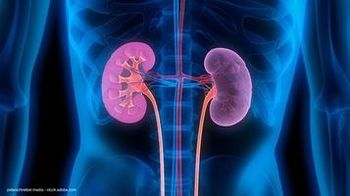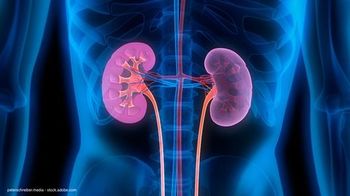
Rhabdomyolysis after laparoscopy: Rare but serious
Irvine, CA--Rhabdomyolysis following laparoscopic procedures is a rarity, but it does occur and can have severe rehabilitative consequences for patients.
Irvine, CA-Rhabdomyolysis following laparoscopic procedures is a rarity, but it does occur and can have severe rehabilitative consequences for patients.
Dr. Clayman and colleagues conducted a study to determine "if there was a pattern that would be informative," he said.
The commonalities that could be labeled preoperative risk factors among the seven patients were few. However, all seven were men, two were morbidly obese, two had above-average muscle mass, two had poorly controlled diabetes, and one had a history of amphetamine abuse.
"The patients were invariably males and usually fairly muscular. Operative risk factors were several. All cases were associated with the use of a kidney rest and the use of the foam egg-crate padding, and all had operating times in excess of 6 hours," Dr. Clayman said.
The seven patients undergoing laparoscopic renal procedures in the study were in a lateral decubitus position for an average of 7.5 hours (range, 5.8 to 9 hours).
"The take-home is that if a kidney rest is to be used, it should be put down within the first half hour of the procedure. I would recommend not using the egg-crate pads and go to one of the more modern types of cushioning such as the gel pads. Lastly, one should endeavor to keep the case time under 6 hours; failure to progress should lead to open conversion," said Dr. Clayman. "Rhabdomyolysis is something that needs to be on your radar screen."
The presentation of rhabdomyolyis is seldom subtle, said Dr. Clayman.
"This is not a difficult diagnosis. When you enter the post-anesthesia recovery room, the patient will tell you that his contralateral hip is hurting," he explained.
"You have to have a low threshold for ordering a postoperative creatine phosphokinase. If it is elevated above 5,000 U/L, give the patient a diuresis with mannitol and Lasix to alkalinize the urine. This may prevent renal problems, but the challenge is limiting the long-term effects, the long-term disability resulting from the localized effects of rhabdomyolysis."
Postoperative peak creatine phosphokinase levels ranged from 9,350 to 99,193 U/L. Another presentation that appeared in six patients was brown urine that showed up at 1 to 10 hours postoperatively. Four patients were sent to the ICU for intensive fluid monitoring. Two underwent emergency fasciotomy to treat a gluteal compartment syndrome.
All patients had extended periods of recovery. Four patients experienced lower extremity weakness. Both of the fasciotomy patients had prolonged problems and were not recovered at the 8-month period, either due to pain or need for a walker.
Newsletter
Stay current with the latest urology news and practice-changing insights — sign up now for the essential updates every urologist needs.

















